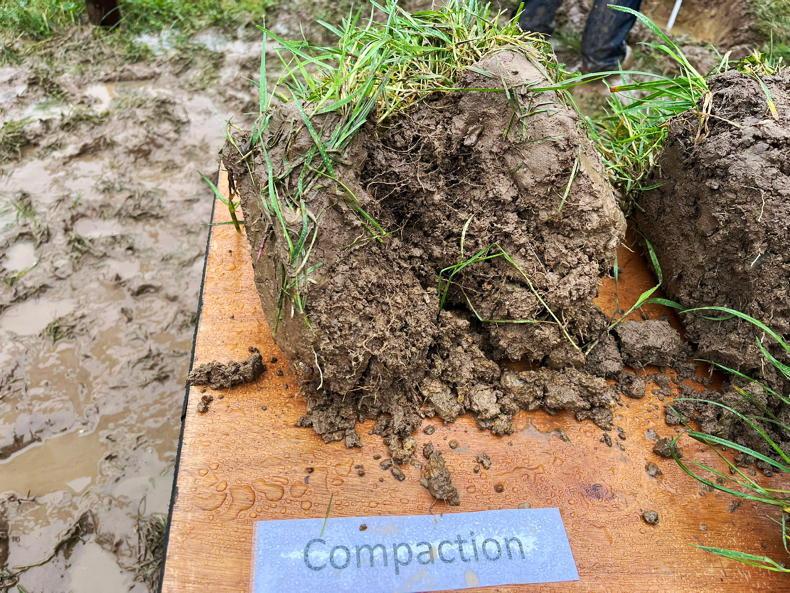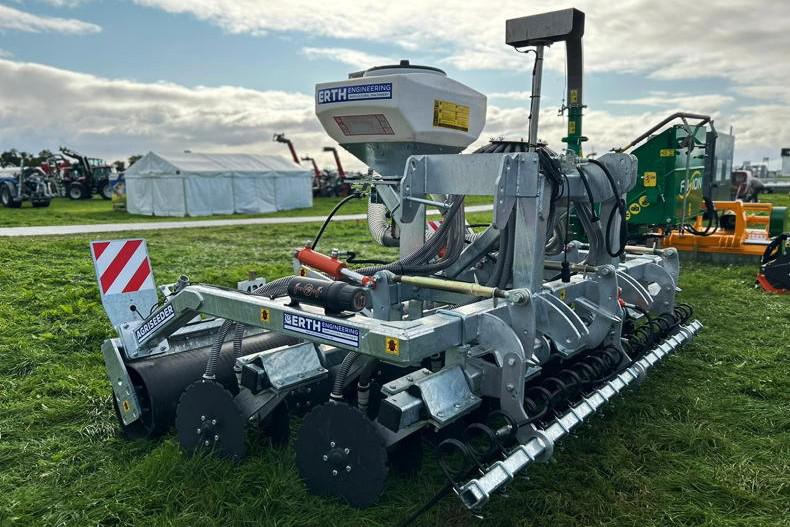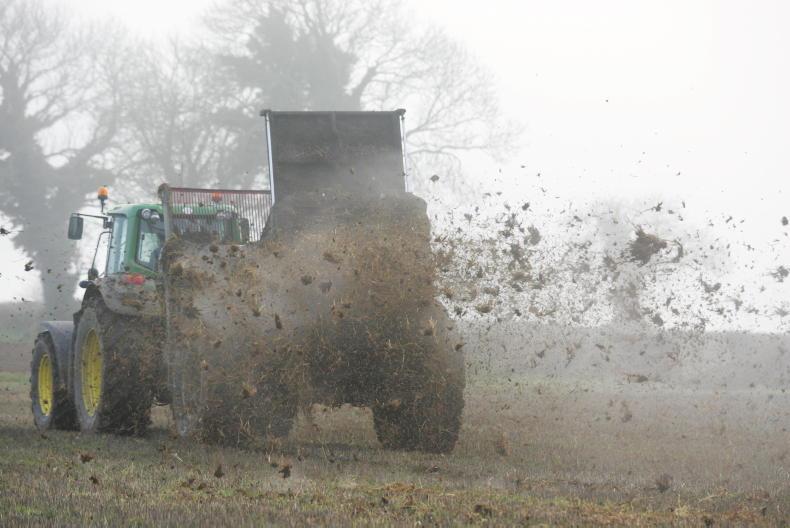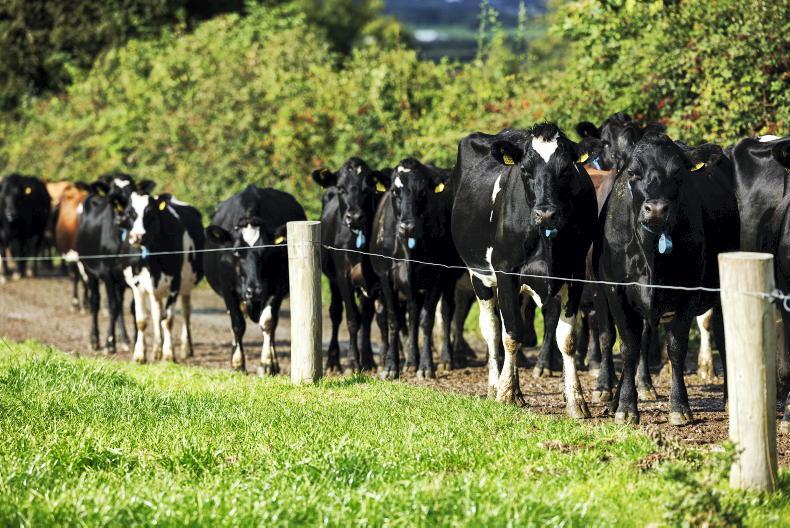The wet conditions of 2012 have taken their toll. But with relatively little winter cereals sown to date and some of the sown crops established in poor conditions, is there anything growers can do to repair or protect the soil now or in the future?
The summer of 2012 was officially the worst since 1986, as most growers learned form their crop yields. But these effects have persisted with soils very wet through the autumn. Soil damage occurred in many fields during combining, grain and straw transport and baling and all of these operations have compounded the difficulties.
While this year is an extreme, the challenges presented can occur to some extent one year in three or four, on average.
Questions raised
While every grower’s soil situation is different, this autumn even normally ‘drier’ soils have ploughed up quite wet making crop establishment difficult. These conditions raise a number of questions for growers. But before attempting to answer these questions, it is useful to consider the main functions of soil and to consider the role of cultivations, compaction and soil moisture.
Soil functions
While soil is hugely complex, it provides a source of nutrients, air and water to support plant growth while providing a structure that anchors plants and ensures contact with roots to facilitate nutrient and water uptake. The soil also provides a drainage route for water.
Cultivation
Cultivation is a process of breaking down soil aggregates and modifying soil structure to allow seedlings to establish and roots to grow. Cultivation also affects soil water status and soil drainage.
Compaction
Soil compaction is where soil aggregates become packed together, altering their structure and reducing the pore spaces which should normally be present between them.
The reduction in, or removal of, pore space between aggregates impedes root growth and water drainage. Moisture content, soil type, the presence of crop and the extent of cultivation will determine how easily a soil is compacted by a weight such as a machine.
Soil moisture
Soil moisture has a major effect on the strength of the soil and its ability to resist compaction or soil damage. Wet soils are weak and easily compacted as the soil particles can be more easily moved together when there is free water around. The presence of water during cultivation or traffic adds further risk of damage by smearing and puddling where the soil aggregates are further disrupted.
1. Is the visible damage due to wet soils, machinery damage, or both?
In most situations, soil moisture alone has made the soil unworkable for most if not all of the autumn. However, harvest traffic has added to the problems by causing surface and deeper soil structure damage.
What is unusual about this year is the extent of the problem. On heavier tillage soils, in most regions the soil has simply been too wet to dry adequately in the drier periods. While soils which were just too wet prevented all autumn work, soils worked or trafficked by machinery may have compaction or smearing/puddling damage which may persist after the soil dries out.
2. What crop establishment system for these situations?
There is no ‘magic bullet’ for these situations. What is needed is a system that does as little damage as possible while creating sufficient seedbed structure, including seedbed drainage, to establish the crop. The plough is probably the most appropriate tool for most of these situations as it loosens to plough depth (helping drainage), but if it is badly smearing the ploughed furrows and the base of the furrow, then damage is occurring.
Minimum tillage options are generally not suited to wetter conditions and certainly will not solve problems already caused.
However, shallow min-tilled land is generally able to support traffic a little better and, as a result, in some continuous min-till situations, crops were successfully sown this autumn.
In certain drier conditions, the non-inversion approach of a min-till system produced quite efficient seedbeds this year compared with ploughing up clay slabs and hammering them into submission. Extreme systems like broadcasting seed on ploughed ground have been tried in the past, but these are high risk practices.
3. Should I deep-loosen or subsoil?
The general answer here must be: ‘not now’. Sub-soiling or deep-loosening relies on shattering of the soil to break pans or loosen compaction. Sub-soiling in wet or very moist soil conditions will only smear the soil with further compaction being caused by the tractor.
Autumn 2013, if dry, is likely to be the earliest opportunity. But as deep loosened soil can often hold a greater volume of water, leaving it prone to re-compaction, subsoiling should be restricted to areas that are definitely compacted. The soil must be examined for compact layers. There is no substitute for digging with the spade to determine these areas.
4. Are any other measures worth considering?
Time can certainly help resolve compaction issues. On heavier soils, wetting and drying cycles will cause the soil to swell and shrink and become less compact. Frosts can also help but, in our climate, the effect is quite shallow.
In most situations, avoiding machinery damage and allowing the soil to recover itself may be the best answer. Unfortunately, as we get further from grass in cropping, the decline in organic matters makes the wet weather challenges greater.
Damage prevention
is the best cure
While excess rain on bare soils can cause soil damage, the main damage with wet soil is caused by machinery traffic and/or cultivation. Because of the difficulty in repairing damage and its long-lasting effect, the best approach is to avoid damage in the first place.
This is difficult in wetter years, as crops have to be sown. The two main factors that influence compaction are soil moisture and machinery traffic. There are three main options to prevent damage.
1. Wait until the soil is dry
Waiting for the soil to dry sufficiently before cultivation or before applying pressure from traffic is the best advice to help avoid damage. However, while this may be an ideal solution from a soil perspective, compromises are necessary to ensure crops get established and harvested.
However, we must consider that the capacity of today’s tractors and machinery to work in difficult conditions, coupled with the desire to get blocks of land sown and harvested at a particular time, tends to expose our land to a greater risk of damage than in the past.
Owners of rented land often feel their land suffers most in this regard but, with the high land cost, the risk of very late sowing to the grower often forces this situation. Perhaps that risk should be shared between owner and grower?
How dry should the soil be? This is always a difficult question. In general, we are waiting for the soil to soak and also for some evaporation. Conditions do not need to be as dry to plough as to cultivate ploughed land obviously, and soakage alone, rather than soakage and evaporation, can be sufficient to allow ploughing. However, if excessive smearing is seen during ploughing, damage is likely to the soil in the furrow and beneath the furrow.
The smeared furrow will be helped by weathering and frosts if a spring crop is planned, but be mindful that the furrow bottom, if badly smeared, could easily form a plough pan.
If you have soil drainage systems in your land, wait to avoid damaging those drains. Today’s heavy machinery has a great ability to damage drainage systems that were installed generations ago.
2. Reducing machinery damage
While drier soils have the biggest effect, machine weight, ground pressure and traffic density are important when conditions allow work.
Machine weight and axle loads have increased dramatically and while tyre sizes have increased, they have not kept pace with weight change.
Examples of axle load change in just two operations — ploughing and combining — are shown in Table 1, along with the wheel/tyre sizes needed to attain reasonable ground pressures. There are very few machines equipped with these tyres, yet the need for them is great. With heavier axle loads, we should be running at even lower ground pressures than with smaller machines.
Outside of tyre choice, other machine factors include:
Minimising the number of passes during seedbed preparation/sowing.
Avoid tools that will smear or pan the ground at working depth. If more than one pass of a machine is needed, avoid running soil engaging implements at the same depth.
Manage headland traffic — cultivate headlands separately, etc, to minimise damage.
3. Field management
This may be a good year to look closely at your fields to consider repairing damaged drains or to consider local drainage of problem spots where these occur. The wet conditions can allow a comprehensive survey to be carried out.
Walk the land with maps, measuring wheel and camera to identify problem spots that might require action.
Examine all open drains to check that they are functioning properly. Check that the known arterial drains are flowing properly into the open drains. Look also at any need for surface drainage caused by depressed headlands and where headlands are continuously ploughed out for convenience.
If you have ponds by headlands, consider cutting a track to let the surface water off.
KEY POINTS
Soil damage takes a long time to repair fully and, so, should be avoided or minimised.
The risk of soil damage is always a compromise between getting work done and not getting time sensitive work done.
Where soil is damp, minimise the weight on the soil, the number of passes and the amount of soil disturbance.
Where visible compaction is obvious, the use of sub-soiling should be delayed until the soil is dry enough to shatter in both directions. This could take until next autumn.
Finally, while we cannot overcome the weather, we can still plan to manage our soils to avoid doing damage in good years and to minimise the damage risk in poor years.















SHARING OPTIONS